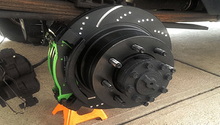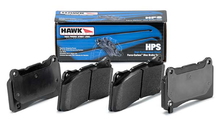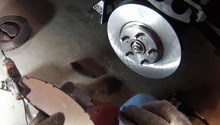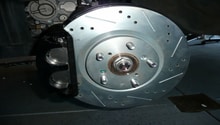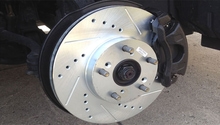Acura RDX: Brake Pad Review
Brake pad selection is often described as a compromise between performance, wear, noise, and dust. Unfortunately, you cannot have all of the best braking characteristics wrapped up into one brake pad, but instead must choose the pad that best fits your application and driving style.
This article applies to the Acura RDX (2007-2015).
Your brake pads are wearing thin and needing to be replaced, so you decide to stop by the local auto parts store for a new set. After asking the salesperson for a set of brake pads for your RDX, he asks whether you would like the standard, gold, or premium pads. More often than not, this question leaves owners scratching their heads wondering if the additional costs of the "premium" brake pads are worth the extra money. Meanwhile, the salesperson is pitching all of his technical jargon at you hoping to convince you to pony up and buy the expensive pads.
The fact is, brake pads come in a variety of friction materials that provide different performance, noise, and wear characteristics. A brake pad designed for use at the race track is going to perform quite differently than a pad developed for street use. This article will provide a brief review of the different types of brake pads available for the Acura RDX to allow individuals to make an informed decision about which brake pads are right for them.
Brake Pad Chart
Organic(Duralast, Nissin Premium, AC Delco Durastop, Bosch Quietcast, EBC Yellow Stuff) |
Semi-Metallic(EBC Ultimax, EBC Green Stuff, Hawk HPS, StopTech Street Performance) |
Ceramic(TRW Premium, Hawk Performance Ceramic, EBC Red Stuff) | |
|---|---|---|---|
Price |
$25-45 per pair | $35-60 per pair | $45-75 per pair |
Performance |
Good |
Best |
Better |
Dust |
Moderate | High | Low |
Lifespan |
30,000 Miles | 30,000-60,000 miles | 70,000 miles |
Warranty |
Limited Lifetime | Limited Lifetime | Limited Lifetime |
Intended Use |
Daily Driver | Daily Driver-High Performance | Daily Driver-Moderate Performance |
Best Value: Organic
Organic
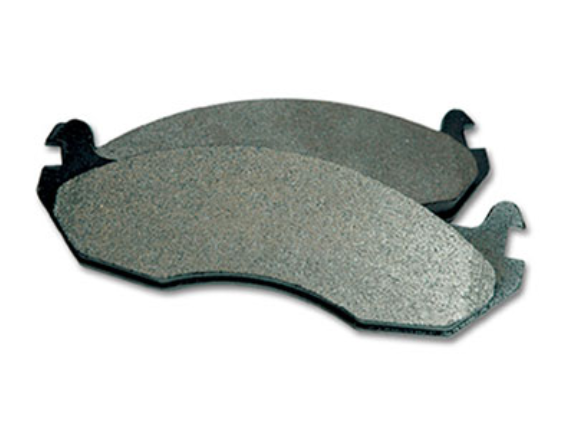
Price – $25-45 per pair
Performance – Good
Dust – Moderate
Lifespan – 30,000 miles
Warranty – Limited Lifetime
Intended Use – Daily Driver
The first type of brake pad at the bottom of the price spectrum that most will encounter is the organic, a.k.a non-asbestos, pad. As the name indicates, these pads are regularly composed of carbon or rubber materials; however a quality organic pad will typically include aramid or kevlar organic fibers that are tightly held together with chemical resins. These pads also contain small amounts of metals to help with heat dissipation and improved abrasion characteristics. These pads will provide a "softer" brake pedal feel compared to other brake pad materials and typically are easier on brake rotor wear. Generally, organic pads produce very little noise, but because of their softer compounds, tend to wear the quickest of the bunch. These are good choice for a street driven vehicle that does not need the performance of a semi-metallic or ceramic pad and produces consistent stopping, especially at lower temperatures. Recommended for owners wanting a budget-friendly brake pad that provides adequate braking performance.
Semi-Metallic

Price – $35-60 per pair
Performance – Best
Dust – High
Lifespan – 30,000-50,000 miles
Warranty – Limited Lifetime
Intended Use – Daily Driver - High Performance
The most common type of brake pad material used today is the semi-metallic pad. The friction material of these pads are primarily composed of steel, copper, and iron mixed with smaller amounts of friction modifiers and fillers. Semi-metallic brake pads are perhaps the most well-rounded material that provide improved brake bite upon initial pedal application and are much less susceptible to wear. Compared to organic pads, semi-metallic pads are also much more resistant to brake fade under severe operating conditions, but do expect higher levels of brake dust and a slight increase in noise while stopping. Semi-metallic pads are offered in a variety compounds with variances in the metal contents that allows for them to be used on daily driven cars, race cars, and everything in between. In general, these pads are typically the highest performing brake pads available; however there is a trade-off of increased noise, increased brake rotor wear, and increased brake dust. Recommended for owners wanting the best brake performance available for their RDX.
Ceramic
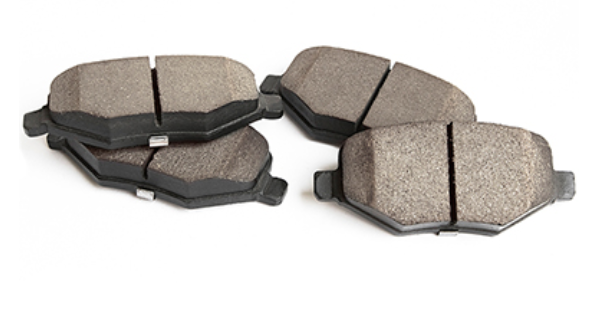
Price – $45-75 per pair
Performance – Better
Dust – Low
Lifespan – 70,000 miles
Warranty – Limited Lifetime
Intended Use – Daily Driver - Moderate Performance
The most expensive of brake pads offered are ceramic compounds. Ceramic pads have gained popularity because of their incredibly long service life and relatively good braking performance. There have been arguments as to how these differ from an organic pad, but most manufacturers state that these brake pads actually substitute the metals found in a semi-metallic pad with larger amounts of copper fibers and dense ceramic materials. The result is a pad that produces nearly no brake dust and offers good performance when used in a daily driven application. On the other hand, the coefficient of friction is quite a bit lower than a semi-metallic pad when cold, requiring an increase in brake pedal effort until operating temperatures are reached. The ceramic pad is lauded for absorbing many of the frequencies produced from brake operation, making these the quietest pads available. Easily the most comfortable pads to deal with on a day to day basis. Recommended for owners that desire a long service and little to no brake dust.
Related Discussions
- Best Brake Pads for RDX- AcuraZine.com
- Brake Pad Replacement on RDX - AcuraZine.com

